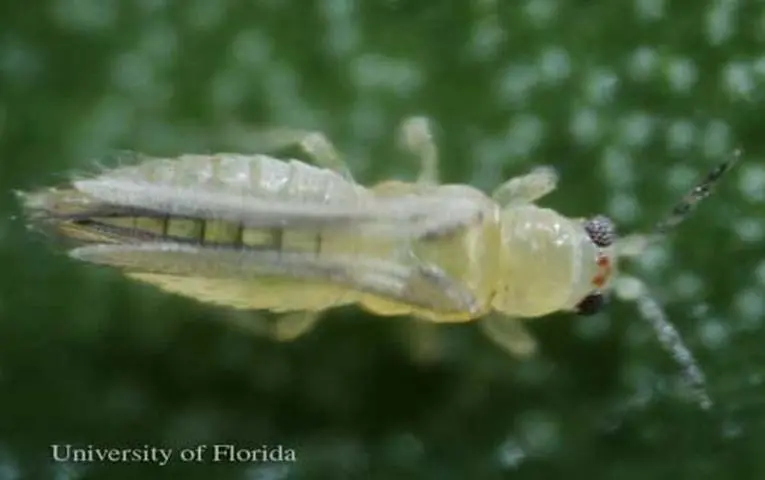By Clint Thompson
University of Florida Institute of Food and Agricultural Sciences (UF/IFAS) research into chilli thrips provides a more accurate way for strawberry growers to manage this annual problem. Producers can now be more efficient in controlling thrips populations.

Sriyanka Lahiri, University of Florida Institute of Food and Agricultural Sciences (UF/IFAS) assistant professor of entomology and nematology at the Gulf Coast Research and Education Center, talks about what her research means for farmers in the state.
“We know that there are so many species out there in these woodland borders, but it’s only three or four that are definitely supporting a reproductive population. If growers want to spray the plants with some sort of pathogen, fungus or predator, they know exactly where to apply these predators now instead of having to buy thousands of dollars of predators and just aimlessly releasing them into the woodland areas,” Lahiri said.
“Spot treatments, cost effectiveness, we know exactly the target to hit now but no chemical treatments. That was the thing I was worried about. Chemical treatments should always be the last option. The woodlands are actually serving a purpose of retaining the susceptible pest population that we so much need to add to the gene pool in the natural environment.”
Lahiri said chilli thrips will feed on the leaves of the strawberry plants. They show up as early as possible and then colonize portions of the field even before any flower thrips appear. Thrips are very tiny insects that range from 1 to 4 millimeters in length. They are very active and mobile. In a new University of Florida study, research showed chilli thrips congregated in one area for about two weeks, then moved and infected nearby plants.
Lahiri added that chilli thrips stay aggregated at one place and don’t move around much. Growers know what area to target.
Sriyanka Lahiri is an assistant professor at UF/IFAS GCREC. To learn more about research going on at the GCREC, join us at the Florida Ag Expo on Nov. 9.

